Daily Life in McMurdo
MCMURDO STATION, ANTARCTICA– We’ve been in Antarctic for just about a week now. Much of our time since we’ve arrived has been spent unpacking, setting up, and testing our gear and attending training sessions and meetings with the Raytheon support personnel.
All 4 of our Aerosonde unmanned aerial vehicles (UAVs) survived the trip to Antarctica, and have been setup and test run on the loading dock of the lab.
The Aerosondes are relatively small, with a 9 foot wingspan. Despite their small size they are capable of flying through strong winds (they were designed to fly through hurricanes), which is good as we expect to see close to hurricane strength winds at Terra Nova Bay, where we’ll be conducting our science flights.
The temperature has remained below 0 F since we’ve arrived. The warmest temperature has been -4 F and the coldest, in McMurdo, has been -36 F yesterday. The past few days have been both cold and windy.
This video was taken from the Crary lab loading dock on Sunday morning. The temperature was -30 F and the wind was blowing 30 mph.
Get the Flash Player to see this player.
Sunday was particularly cold and windy, with wind chill temperatures down to near -70 F. Despite the cold weather myself, Nick, Peter, and Paul took a walk to Scott’s Hut, located just north of McMurdo. The hut was built as part of Sir Robert Falcon Scott’s Antarctic expedition in 1902. We’re hoping to get a tour of the hut tomorrow afternoon, as no unescorted groups are allowed to enter the hut to ensure that the historic artifacts are not disturbed.
While the weather is one aspect of coming to Antarctica at this time of year that I’ve really enjoyed on this trip, the other is seeing the transition from the long polar night to the long days of summer. Since we’ve been here the length of daylight is getting noticeably longer. When we arrived last Wednesday sunrise was at 10:53AM and sunset was at 2:59PM. Today sunrise is at 9:41AM and sunset is at 4:08PM, giving us more than 2 hours more daylight now than just a week ago. By September 21st we’ll have 12 hours of daylight. Once the sun rises on 19 October it will not set again until 24 February.
In many ways, everyday life in McMurdo isn’t too different from life back in the US. We live in dorms, that keep us well insulated from the cold. The dorm rooms are setup to accommodate 2 people per room. I’m sharing a room with Dave. There are communal bathrooms on each floor of the dorm, and each dorm has a TV lounge room.
Our meals are prepared for us and served in a cafeteria in building 155 (all of the buildings here are referred to by numbers). Meals include breakfast, lunch, and dinner as well as a midnight meal called Mid-Rats for people that work the nightshift.
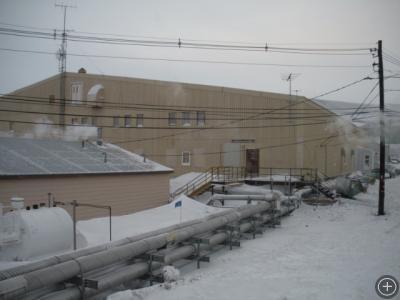
Building 155, which is the location of the cafeteria, some dorm rooms, and a store that sells snack foods, drinks, souvenirs, and essentials like soap and shampoo.
There are two bars (Gallagher’s and Southern Exposure) and a coffee house in McMurdo.
We are able to go to a gym that includes cardio equipment and weights. The only problem I’ve found in going to the gym here is that I find it very difficult to put on my big parka after working out, since I’m usually very hot and sweaty. I’ve taken to walking the 100 yards from the gym to my dorm in just my shorts and T-shirt after a work out. This is fine, even with the temperature down near -30 F, although my T-shirt did freeze stiff during the less than 5 minute walk back to my room the other day. At least the cold weather makes it easy to cool off after a workout.
We spend most of our time in the Crary lab, which contains offices as well as lab space.

Unlike my office at home I have a very nice view from my office down here, which overlooks McMurdo sound (covered with sea ice at this time of year) and the Royal Society Range of the Transantarctic Mountains across the sound.
This afternoon we visited the Berg Field Center food room, to get food to stock our hangar at the Pegasus ice runway.
The drive from McMurdo to the runway takes about 30 minutes, and if the weather becomes too bad we will need to stay out at Pegasus, rather than risking getting stuck trying to drive back to town. Weather conditions here are classified as conditions 3, 2, or 1. Condition 3 is considered normal weather and there are no restrictions on travel. Condition 2 is defined by stronger winds (48 to 55 knots), a wind chill temperature of -75 to -100 F, or visibility less than 1/4 mile. During condition 2 weather you are required to check out with the firehouse before leaving town. Condition 1 weather is the worst weather, with wind speeds greater than 55 knots, wind chill temperatures less than -100 F, and visibility less than 100 ft (often due to blowing snow). During condition 1 weather you are not allowed outside and off base travel is not permitted. If we happen to be at Pegasus when condition 1 weather occurs we’ll need to stay there until the storm ends. If we are driving between Pegasus and McMurdo and get caught in condition 1 weather we’ll need to stop where we are and wait in the van until the weather improves, since it is too easy to get lost and drive off of the road in whiteout conditions.
Now that the last flight to Antarctica, until the end of September, has been completed, we are now cleared to start setting up at the Pegasus runway. We are planning on going out to Pegasus tomorrow to begin setting up our office space. Our hangar will be a large tent, and is going to be setup by the carpenters later this week. That should be ready for use by the end of the week. Once that is setup we’ll be ready to start our flights. I’ll include some photos of our facilities at Pegasus on my next post.


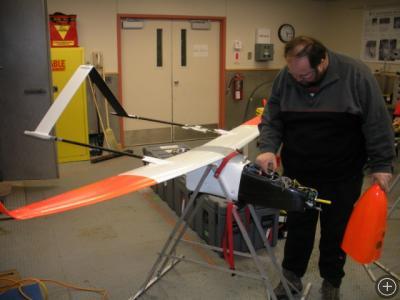
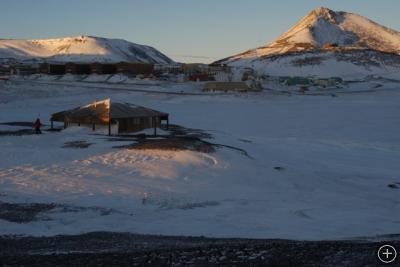
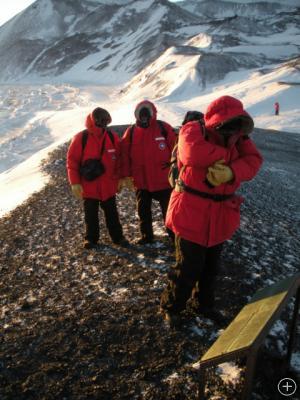
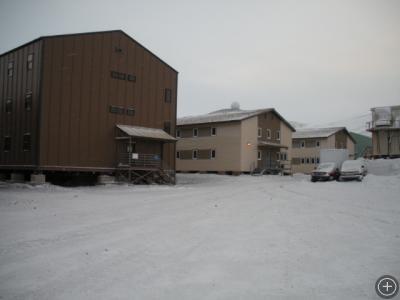
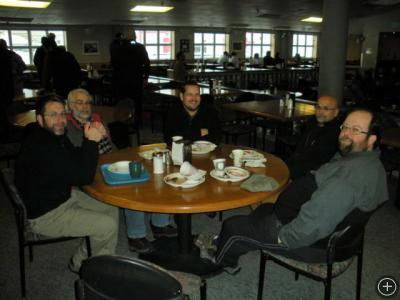

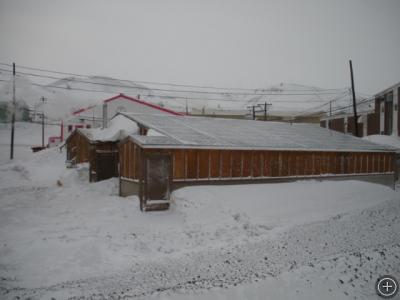
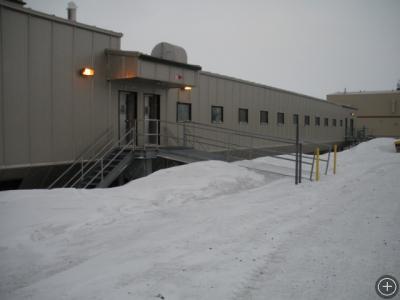
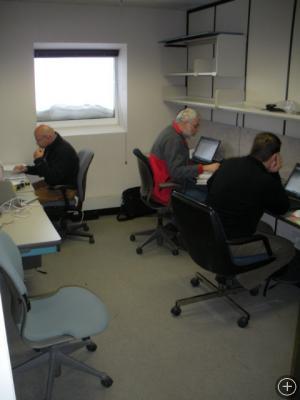
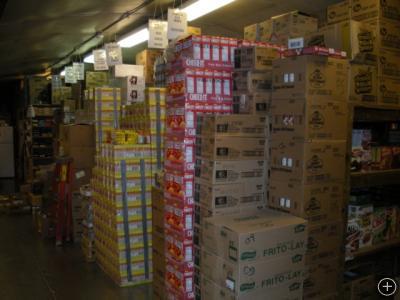

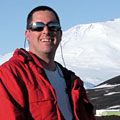

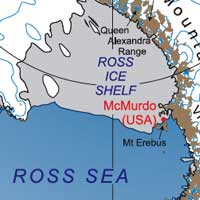





Hi All,
Thanks for the comments on my first blog post.
Feel free to drop me an e-mail (john.cassano@colorado.edu) if you want.
Cheers,
John
What a great peak into life at McMurdo…especially the picture of the food store room. Can’t wait to hear about setting up at Pegasus. Those winds are sounding mighty fierce!
Sounds like a fascinating project and a great time! (You don’t need any more Aero Eng or GIS/imaging help, do ya? hehe). I’ll be following along.
Looks like their feeding you off of Fritos and Cheezits!
Dear Mr. Cassano,
I am nine years old. I love science. My mom, brother and I enjoyed reading your journal. Wow! It sure sounds cold there. We live in Lee’s Summit, Missouri. We are studying Antarctica right now in our home school. It is a very interesting place. I thought all deserts were hot. I noticed that there were only men in your pictures. Are there any female scientists there? Thank you.
A fan of mountains since childhood (I cut my teeth on the Blue Hills in Milton, Mass., then New Hampshire’s White Mts), I was struck by that picture of the beautiful Royal Society Range (part of the Transantarctic Mts.). I wonder if anybody has climbed them. One party was out collecting meteorites and had the great good fortune of climbing the T.A. Mts. to scout for them. Few have such an opportunity. There were also some fossil collectors up there.
–Roger Williams, NOAA veteran (GMCC-CMDL-GMD).
Hope all is going well down their. Hey what is the miles of ice to the open water this year, just would like to know if you could find out please.
Thanks RJ
I just applied for the surveyor position there, I have been looking at this and now I really want the job! I am pretty sure I could handle a whole year there because I have done several year long tours without going home. One was Korea and the other was Iraq.